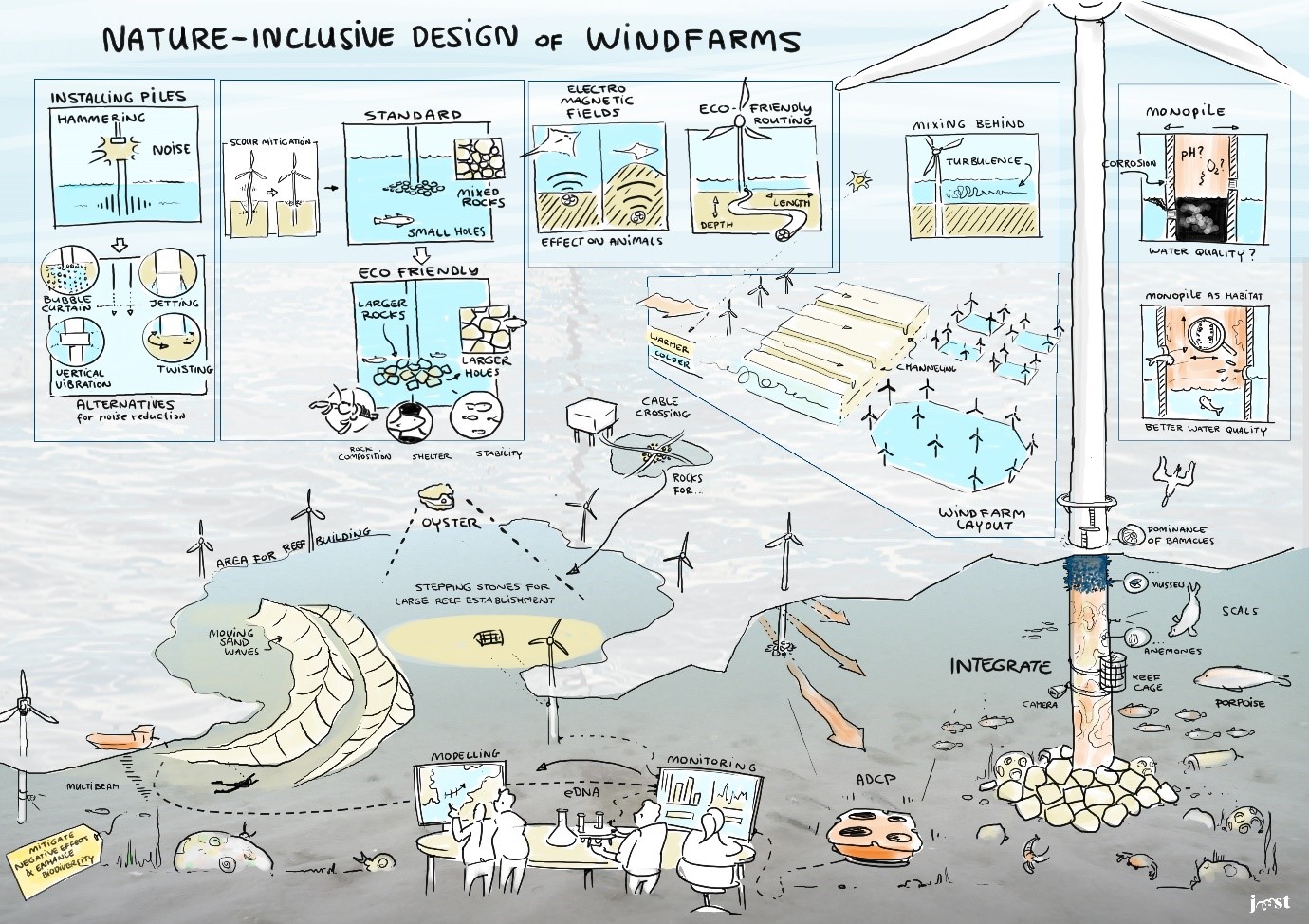
Offshore infrastructure and its impact on marine biodiversity – opportunities and risks

The drive for renewable energy also induces a very rapid growth in marine infrastructure. This is currently predominantly offshore wind farms, but in the future this may also include offshore solar panels or even production platforms for green hydrogen. The presence of large surface areas with high densities of turbines, PV panels, platforms and underground cables will have an impact on the marine system, and particularly on its biodiversity. This is not all necessarily negative. In fact, offshore infrastructure is often overgrown with spectacular marine growth and there many attempts to adapt infrastructure to facilitate settlement of organisms. Nature Inclusive Design is a hot topic and many developers broadcast their achievements and advocating their designs as ‘artificial reefs’. This is analogous to the “rigs to reefs”-concept, advocated in the US, where decommissioned oil and gas infrastructure is sometimes left in the sea to promote local biodiversity.
There is no question that offshore infrastructure in such dynamic environments can work as an artificial reef and can protect the local seabed to other negative impacts from activities such as bottom trawling fisheries. However, there are serious questions to what extent it is desirable to promote such reefs, if the natural environment is not conducive to reef building species. This lecture will explore the technical and scientific knowledge on Nature Inclusive Design, as well as the dilemmas we are facing with respect to choices for nature inclusive design and acceptance of environmental impacts.
Speakers
Luca van Duren, Luuk van der Heiden and Antonios Emmanouil (Deltares)
Download the presentation
